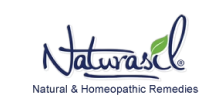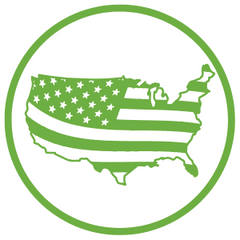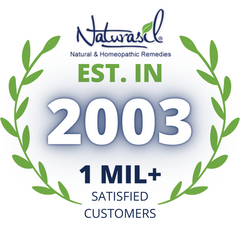 There are few situations in life capable of causing such anxiety than dealing with an outbreak of any kind before or during a vacation or business trip. For millions, the notion of traveling is enough to increase stress levels, especially after we have all been sidelined with Covid, but add a noticeable skin outbreak, such as tinea versicolor, into the equation, and it's only a matter of time before stress and anxiety begin to skyrocket.
There are few situations in life capable of causing such anxiety than dealing with an outbreak of any kind before or during a vacation or business trip. For millions, the notion of traveling is enough to increase stress levels, especially after we have all been sidelined with Covid, but add a noticeable skin outbreak, such as tinea versicolor, into the equation, and it's only a matter of time before stress and anxiety begin to skyrocket.Unlike many other skin infections, Tinea Versicolor does not pose an immediate threat to you or others; however, this does not mean there aren't several travel considerations you must make. Even though it's impossible to spread this disease to others, increasing its severity throughout your travels is very possible. Therefore, before packing your bags, review the following travel tips for a few minutes: Your skin and comfort will thank you.
Prepare For Your Journey | Preventative Measures To Thwart An Outbreak
As with many skin conditions, the most effective way to prevent an outbreak from ruining your travel plans is to implement various preventive measures several weeks or months before your departure date. Because Tinea Versicolor is caused by an overgrowth of a natural species of skin flora known as Malassezia furfur, the most effective preventative step is to ensure this balance of yeast growth does not shift into an uncontrollable growth.
Even if you're not showcasing signs of an active Tinea Versicolor infection, if you've suffered from this condition in the past, the likelihood of future outbreaks is relatively high, especially if you're traveling to a humid tropical climate. Therefore, turn to effective preventative measures, such as Sulfur-Lavender Soap from Naturasil. These products actively work to maintain a natural balance within your skin flora, which is imperative to prevent an outbreak while traveling.
Tropical Vacations | A Dreamlike Destination Foiled By Yeast Manifestations
There's nothing quite as exciting as stepping off a plane and into a realm of true tropical relaxation. While the warm breeze and humid air promote mental peace and relief from everyday anxieties, this source of comfort is also a source of "food" for Tinea Versicolor. The dimorphic fungus responsible for this yeast infection thrives in hot, humid climates. Therefore, if you've suffered from a previous outbreak of Tinea or are afraid of triggering an outbreak, it's imperative to prepare for this genuine possibility.
While utilizing preventative measures in the above section will help ward off an outbreak, in the tropical climate, consider the topical application of antifungal OTC medications, such as clotrimazole or miconazole. If you wish to avoid applying synthetic ointments, which can irritate sensitive skin, natural remedies may be your ideal choice. Consider using a topical cream with ingredients such as eucalyptus leaf oil, jojoba seed oil, Melaleuca alternifolia leaf (tea tree) oil, and Cymbopogon citratus leaf (lemongrass) oil. Each component is known throughout the holistic – and scientific – community as having potent antifungal and antibacterial properties.
Products, such as Naturasil Tinea Versicolor treatment, feature the compounds mentioned above and are regarded as one of the most effective natural Tinea Versicolor treatments on the market. Even if you're not showcasing active signs of an infection, applying these compounds to your skin while in a tropical climate may hinder the progression of Tinea.
Diet and Outbreaks | Foods to Avoid to Reduce Symptoms and Proliferation
There is a direct connection between diet and skin yeast proliferation. While most outbreak triggers revolve around external influences, your internal health and diet play a direct role in the accumulation of skin flora. Therefore, before going on vacation – and throughout your travels – be mindful of what you put in your body. While you may be required to sacrifice some of your favorite foods, clear, infection-free skin is worth the sacrifice.
Foods to Avoid:
Sugar: This is found in almost all foods in the modern American diet. Sugar acts as a growing agent for yeast. Therefore, to effectively fight the proliferation of the microorganism responsible for Tinea, you should significantly reduce or altogether avoid sugars until the symptoms are under control. There are many natural alternatives to standardized sugar, which may help prevent the unnecessary growth of skin flora. For example, raw honey or agave nectar may be appropriate substitutes.
Barley Malt: Found in a wide array of bread and grains, barley malt is a derivative of the beer-making process. It should be avoided entirely because of its high yeast content and ability to support the growth of internal and external yeast (flora). In many cases, most forms of gluten act as catalysts for yeast development. Therefore, many natural health practitioners recommend a gluten-free diet to regain control of these invisible colonies living throughout your body.
Beer: While some feel all forms of alcohol contribute to yeast growth, and they are not incorrect, many find avoiding alcohol altogether during a vacation or business trip almost impossible. If you drink an alcoholic beverage, choose clear liquor and avoid beer altogether. Beer, along with many other forms of alcohol, undergoes a fermentation process supported by yeast. Therefore, consuming these yeast-filled beverages often triggers the growth of skin and gut flora. If you're predisposed to Tinea Versicolor, drinking a cold beer could result in a massive outbreak.
Luckily, Naturasil has all-natural solutions to Tinea and other issues.







